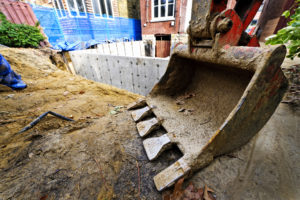
During the past year there has been much activity in the moving and home-buying landscape, with many people wanting to move out of cities and into suburbia. Along with all the movement, home renovations and additions are also on the rise. Not only do folks want to put their personal stamp on their beloved homes; they want to make them conducive to their ever-shifting lifestyles.
And that may mean adding space for home offices and multigenerational living, rather than upgrading to a house that has more square footage but is going to cost a lot and needs the same amount of work. Updating their current homes and adding on to the space give them the best possible chance to create the homes of their dreams.
The first step in undertaking a renovation is to prioritize your needs. Then search for an architect whose aesthetic lines up with yours. Engage this architect to help you with your list of priorities and incorporating it in the most comprehensive way. At this point, clients often select an interior designer to work on the design with them and the architect. Once your design is completed to your satisfaction, your architect can help you determine the next steps. These include interviewing and getting bids from contractors. Determine your time line and if the renovation is so extensive that it will require you to move out for an extended period. If you can stay in your home ”” which you may very well be able to do with an addition ”” figure out the phases of construction and how much of your life will be disrupted by what”™s going on around you.
When selecting your contractor, hire someone who is available for questions that arise during the process and keeps an open dialogue with you. Also hire a contractor who is comfortable working with both the architect and your interior designer if you have one. The construction process can be longer than you”™d like, especially when renovating an older home. Be prepared for surprises along the way, with both you wallet and timetable. Often unforeseen problems do pop up. Consider setting aside an additional 20 percent of finances for these “surprises.” Bear in mind that change orders can escalate your costs significantly, so it”™s best to keep them to a minimum and take the time to make changes with your architect on paper prior to construction.
It”™s also important to set aside a realistic budget for decorating. Many clients don”™t consider that and get to the end of a project without enough funds to finish it. Make a priority list for the furnishings you need and create a budget that will keep the design process on track, too. If your budget only allows for partial decorating, determine which areas you want to work on first and make them as comfortable and complete as possible. Keep trends to a minimum. Although you want your house to be updated and comfortable for modern living, try to avoid trends that will date your construction/renovation a couple of years after you have completed the process.
As a rule of thumb, the lowest bid can often cost more in the end. Hire a reputable, licensed contractor and ask for references. Construction can be a fun, creative process, so enjoy it. Along the way, you”™ll also learn a lot about it, town permits and building inspections. Sometimes that will be frustrating, but the end result will be fantastic and allow you to incorporate the systems needed for living in an updated, modern world.
For more, call 914-447-6904 or email Cami@camidesigns.com.





















